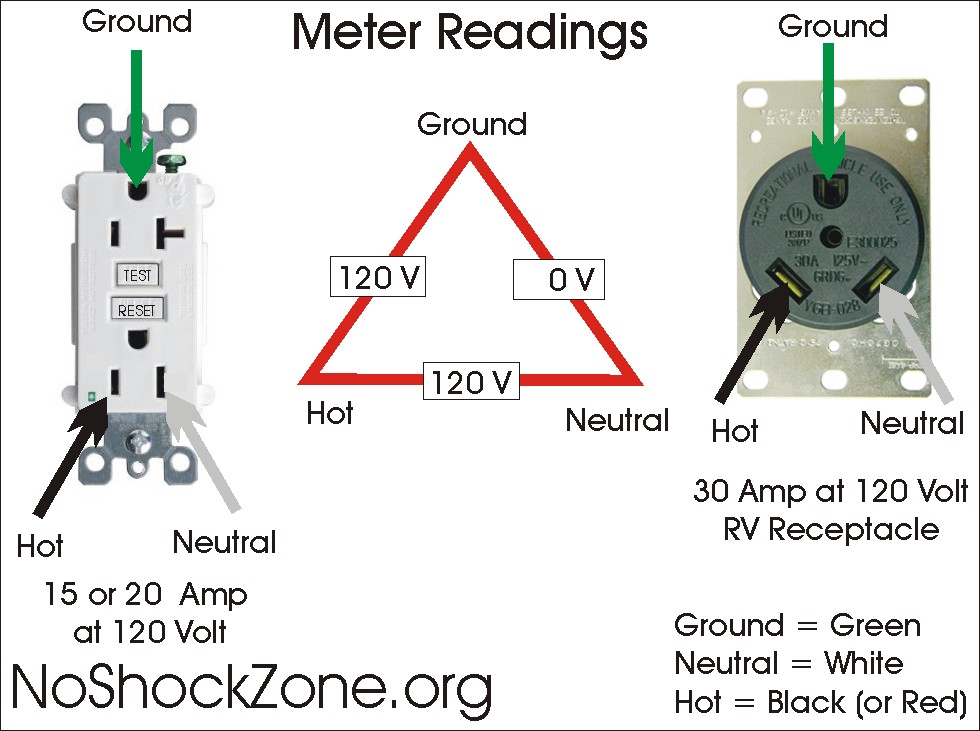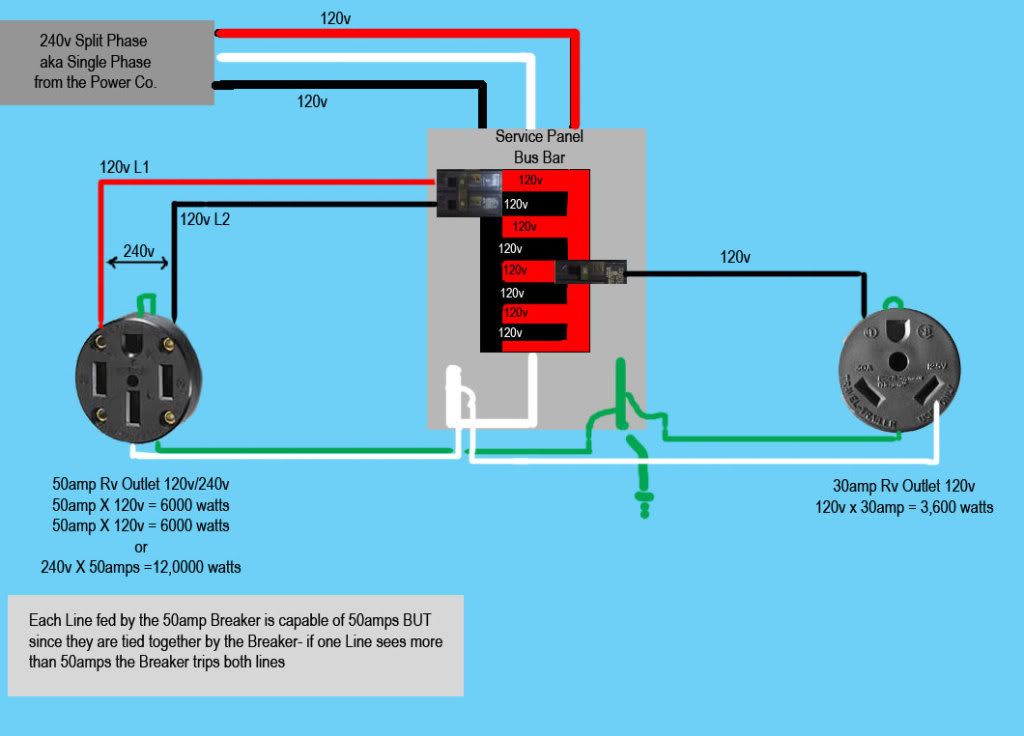Trackrig
May 18, 2016Explorer II
Making sure how to test new RV outlets.
I'm having 400A service and RV outlets installed on a piece of property we bought in Washington. There will be three outlet boxes installed like you find at most RV parks with 1ea 50A, 1ea 30A 2ea 20A outlets and their respective breakers. When the outlets are installed I'll test them before plugging in. I want to be sure this is what I should find.
When I test it with voltmeter, this is what I believe I should find - look down about 5" from the top of the page - for some reason I couldn't cut and paste just the testing / readings part. There are examples for both 50A and 30A. Go to the upper left corner to the Electrical Testing tab.
RV outlet readings.
If something is wrong that my testing misses somehow, I have a hardwired 50A Surge Guard that should protect me. It is interesting that so far in being out for 6 months a year for three years I haven't run across any bad power in an RV park that the Surge Guard hasn't liked. We've been in a lot of places as we never stay anyplace long than 3 - 4 days.
Thanks,
Bill
When I test it with voltmeter, this is what I believe I should find - look down about 5" from the top of the page - for some reason I couldn't cut and paste just the testing / readings part. There are examples for both 50A and 30A. Go to the upper left corner to the Electrical Testing tab.
RV outlet readings.
If something is wrong that my testing misses somehow, I have a hardwired 50A Surge Guard that should protect me. It is interesting that so far in being out for 6 months a year for three years I haven't run across any bad power in an RV park that the Surge Guard hasn't liked. We've been in a lot of places as we never stay anyplace long than 3 - 4 days.
Thanks,
Bill

